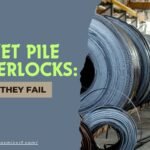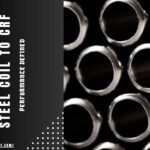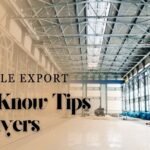Steel behaves differently when shaped with control. That’s what makes cold-formed steel sections stand apart.
A flat sheet becomes a stiff beam. A light structure handles more weight. Cuts stay clean. Profiles stay straight. And across India’s expanding infrastructure work—roads, railways, water bodies, and urban buildings—these cold-rolled sections are now quietly everywhere.
They’re not always seen. But they change how fast a structure goes up, how well it performs, and how much it weighs.
CRF Sections in Urban and Industrial Buildings
CRF steel is often used in wall studs, roof trusses, door frames, and floor joists. These sections are light and quick to install, which helps in high-volume urban housing and modular building projects.
In factories, CRF sections form support frames and racks. The high strength-to-weight ratio also suits mezzanines and secondary structures that need flexibility.
Cosmic CRF India produces profiles designed specifically for these use-cases—straight, reliable, and shaped to standard construction needs.
Road Barriers, Signage Columns, and Lighting Poles
National and state highways use cold-formed steel to support safety barriers, sign boards, and lighting masts.
The predictability of CRF sections allows uniform production of long lengths that resist buckling under wind, vibration, or vehicle impact.
In many states, CRF manufacturing India units supply pre-punched, pre-drilled columns that reduce fabrication work at site and speed up pole and frame erection.
Flood Control and Soil Retention Structures
Sheet piles made using cold-rolled steel are now standard in canal linings, floodwalls, and slope containment zones. They hold back water and soil while taking minimal space.
CRF sheet piles are also used in temporary excavation support in metro and pipeline projects.
Our own CRF units at Cosmic CRF India have supplied Z-type and trench sheet profiles for these exact conditions, where fast installation and repeat use matter.
Bridge Girders and Composite Decks
CRF sections are also used in secondary bridge elements, like bracing systems, edge beams, and formwork decks.
They arrive in uniform length, can be lifted by light machinery, and integrate easily with cast concrete decks.
This reduces formwork time and improves dimensional consistency in composite construction.
Railway Applications and Rolling Stock
Rail infrastructure uses CRF steel both above and below the ground. Tracksides, fencing, maintenance platforms, and signal structures all benefit from steel sections formed to spec.
More importantly, rolling stock fabrication also relies on CRF for structural parts of wagons and coaches. Underframes, wall stiffeners, and floor sections use cold-rolled members for strength and weight balance.
At Cosmic CRF India, we supply several such profiles to public and private rail coach facilities. This includes profiles aligned with RDSO requirements and tailored for modular integration.
Final Thoughts
CRF is no longer optional in modern infrastructure. From flood barriers to transport systems, cold-formed sections are now shaping structures that need to be lighter, faster, and built to last.
Much of this depends on how precisely these sections are made.
That’s where our work at Cosmic CRF India fits in—developing cold-rolled profiles that meet the real demands of bridges, basements, platforms, and industrial support systems.
Wherever tighter specs and consistent performance are non-negotiable, well-formed steel makes the difference.




